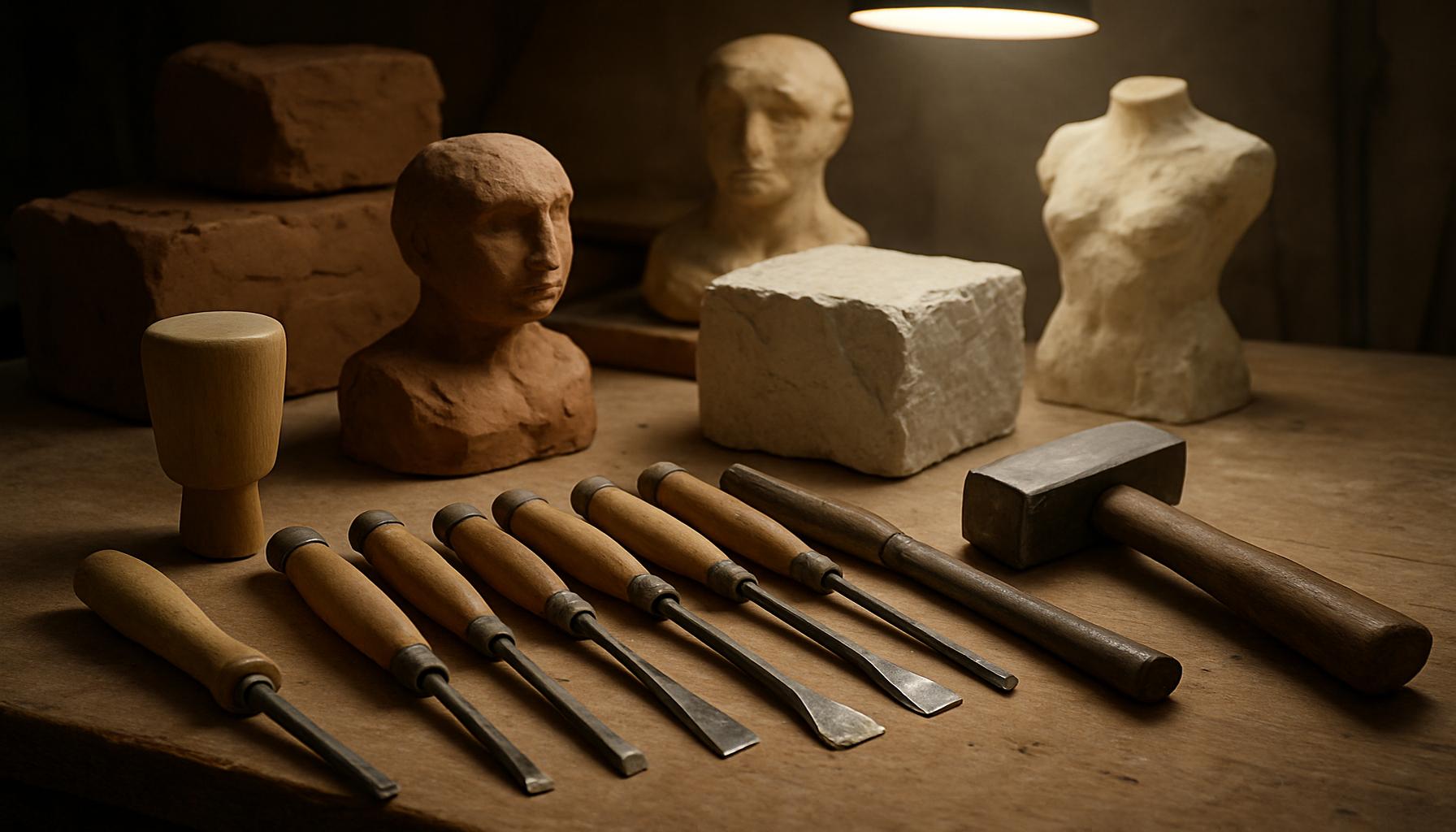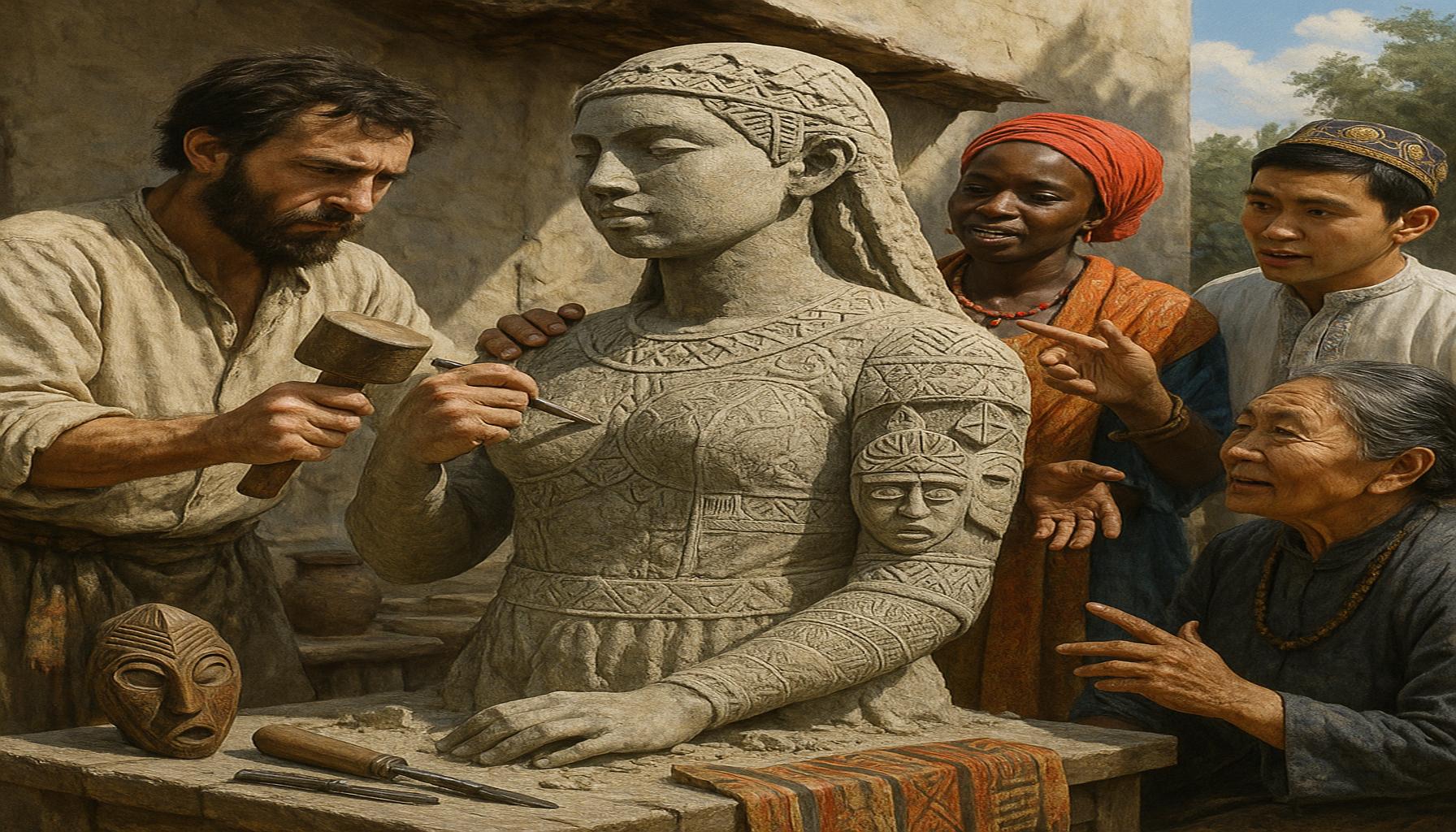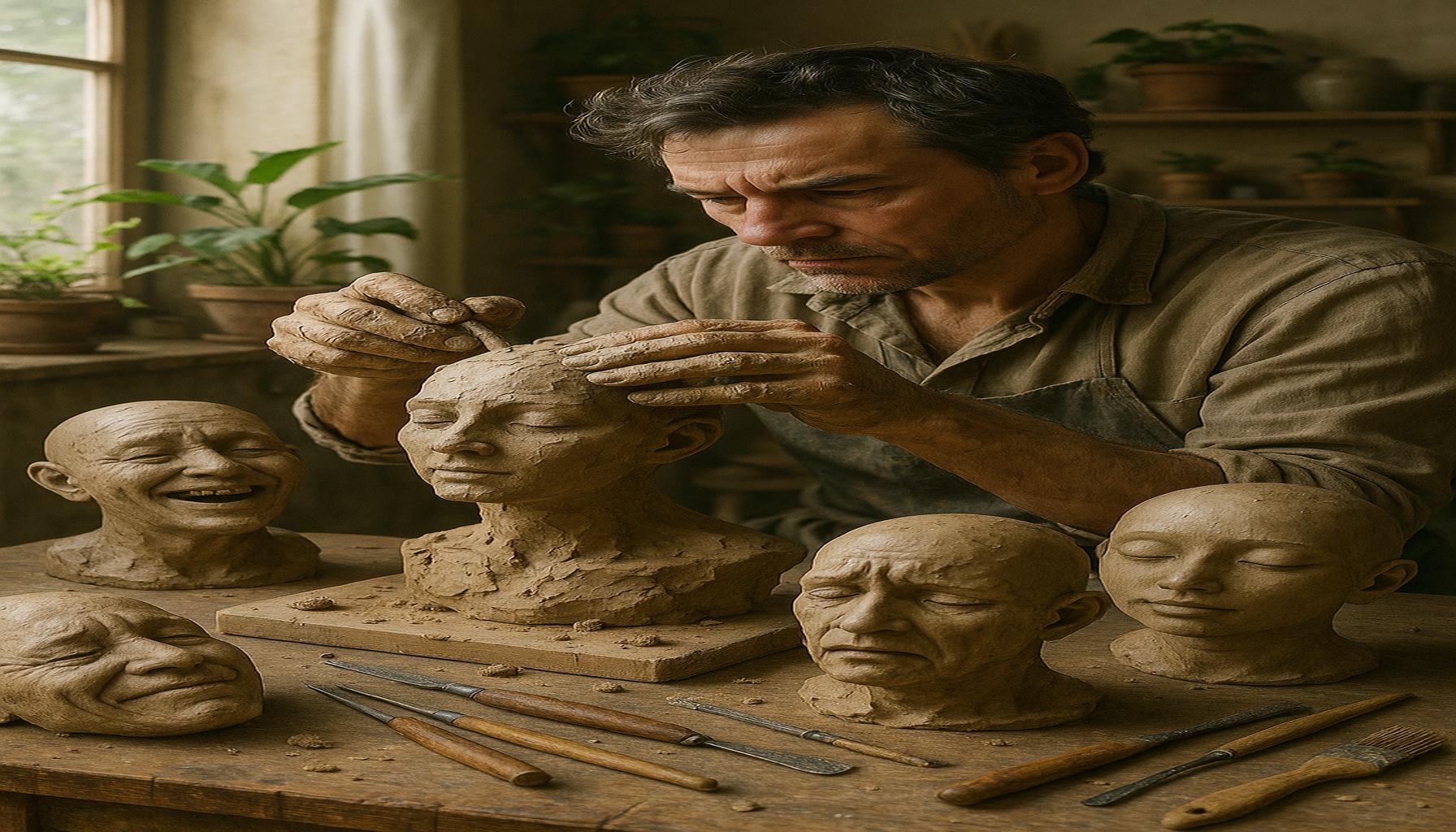The Evolution of Sculpture: From Classic to Contemporary
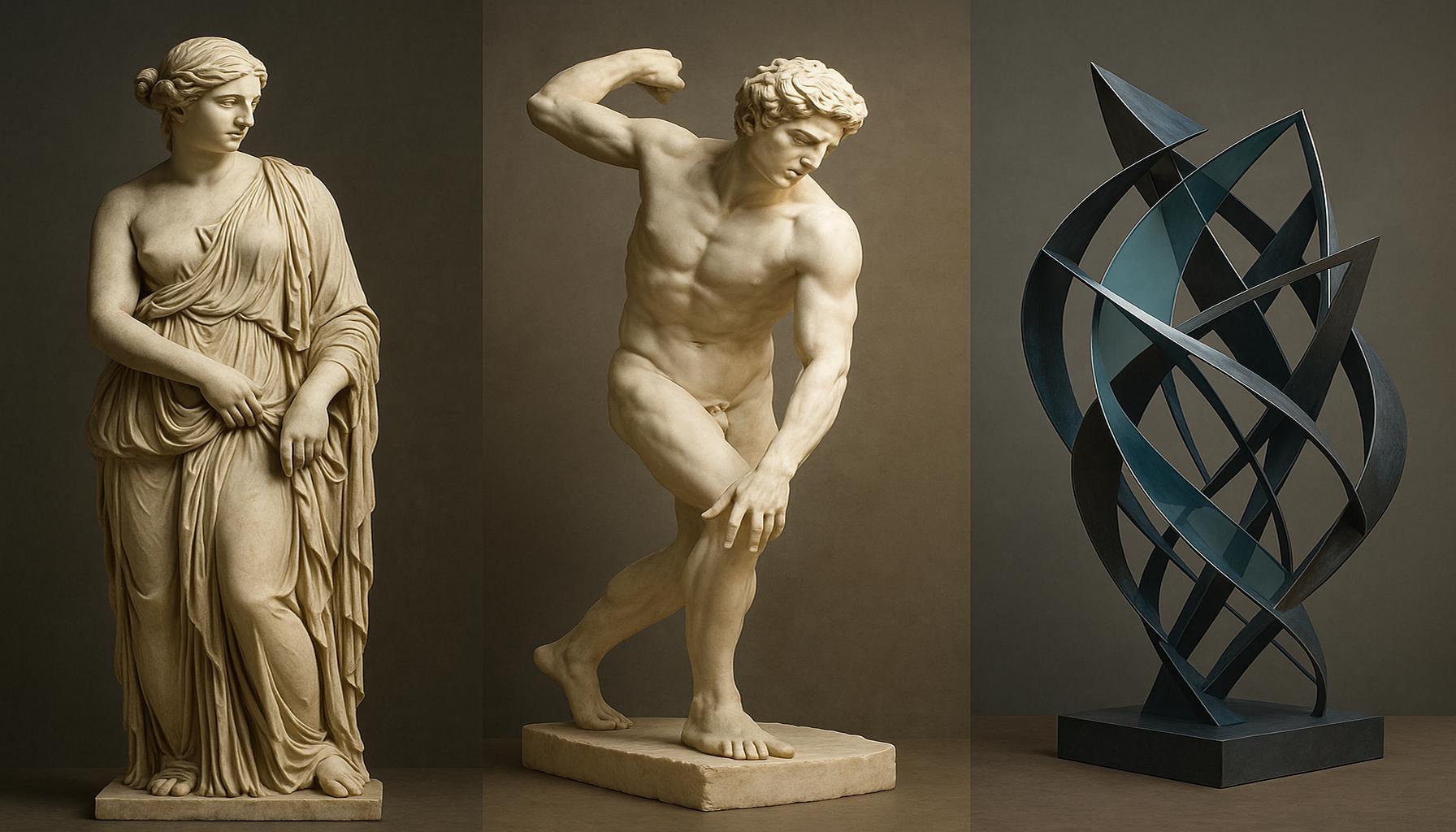
The Transformative Nature of Sculpture
Sculpture has long been a significant facet of artistic expression, capturing the essence of cultures, emotions, and ideas throughout history. The transformation of this art form mirrors societal changes, technological innovations, and evolving artistic philosophies. From the grand marble statues of ancient civilizations to today’s eclectic installations, sculpture continues to captivate audiences with its depth and complexity.
Classic Era
The Classic Era, particularly during the height of Ancient Greece and the Renaissance, was marked by an unwavering pursuit of perfection and realism. Artists like Michelangelo created masterpieces such as the monumental David, which exemplified human anatomy and emotion through intricate detailing and proportion. The Parthenon sculptures, known as the Elgin Marbles, showcased intricate reliefs that celebrated myth and religion. These works remain benchmarks for aspiring sculptors, illustrating the enduring power of beauty and form.
Baroque Period
Transitioning into the Baroque Period, sculpture took on a new dynamic. This era introduced not only intricate details but also movement and emotion in figures. Gian Lorenzo Bernini’s Ecstasy of Saint Teresa is a quintessential example; the piece captures spiritual fervor through vivid expressions and the suggestive movement of drapery. Baroque sculptors often focused on engaging the viewer, drawing them into the narrative and elevating the work from mere aesthetic to a profound spiritual experience.
Modernism
The 19th and 20th centuries marked a seismic shift in artistic paradigms known as Modernism. As traditional narratives were questioned, artists like Henry Moore and Alberto Giacometti explored abstraction, embracing new forms that reflected the complexities of contemporary life. Moore’s large-scale, organic sculptures invite tactile interaction, while Giacometti’s elongated figures express existential themes, highlighting the human condition in a fractured world.
Contemporary Sculpture
Today, contemporary sculpture encompasses a wide spectrum of styles, techniques, and materials, reflecting the diverse realities of our world. Sculptors utilize everything from traditional stone and metal to innovative materials such as glass, plastic, and even recycled objects. Artists like Damien Hirst and Ai Weiwei challenge viewers with works that provoke critical thinking around topics such as consumerism, social justice, and environmental crises.
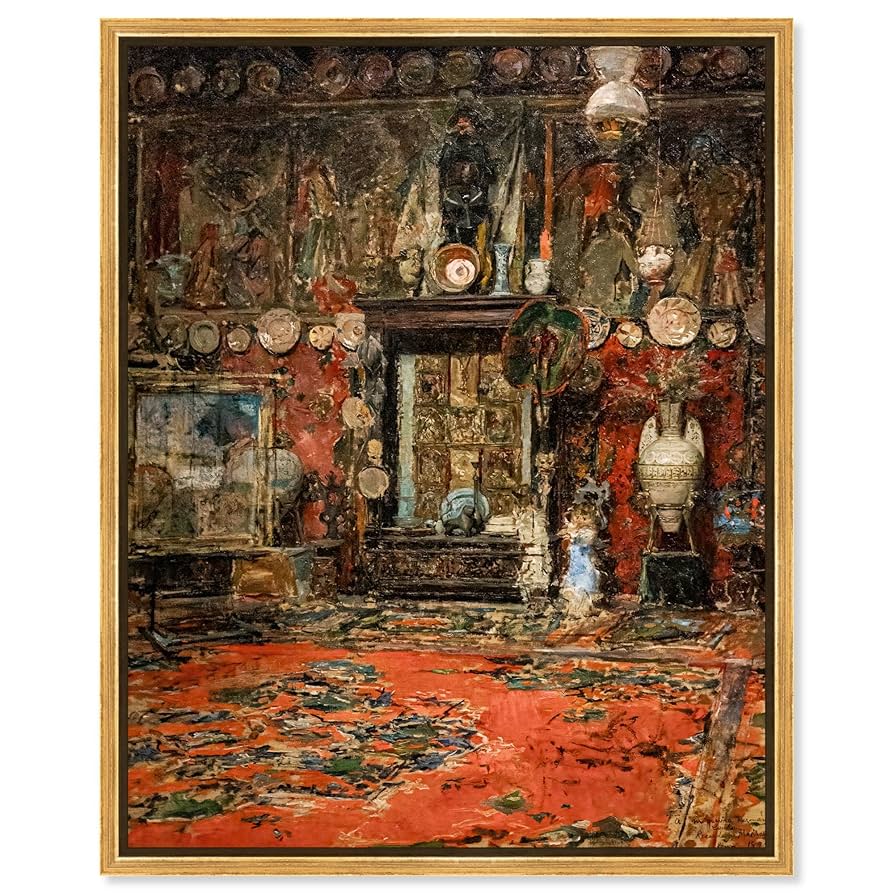
In the United States, contemporary sculptures frequently adorn public spaces, engaging communities in dialogue about art and its relevance to daily life. Installations like Richard Serra’s Torqued Ellipses invite visitors to navigate the formed spaces, creating a visceral experience that redefines how we interact with sculpture. This trend illustrates that the choice of medium is dynamic, with artists continuously experimenting to forge new pathways in interpretation and experience.
The journey of sculpture from ancient to contemporary times is not just about artistic evolution; it also reveals how artists respond to and reflect the complexities of human experience. As we delve deeper into the history and practices of sculpture, it becomes clear that this art form will continue to challenge, inspire, and resonate with audiences across generations.
DISCOVER MORE: Click here to dive deeper
Tracing the Path of Artistic Transformation
The evolution of sculpture serves not only as a timeline of artistic styles but also as a reflection of shifting cultural values and societal norms. Each era presents distinct characteristics that mirror the prevailing philosophies, technological advancements, and emotional undercurrents of its time. To understand the progression of sculpture, it is essential to explore how the various periods contributed to this dynamic art form.
The Classical Influence
The foundation of Western sculpture can be traced back to the Classical Era, where the Greeks and Romans honed the craft to showcase their ideals of beauty and humanism. Greek sculptors emphasized anatomical precision and proportion, resulting in timeless works that celebrated the human form. This era’s focus on naturalism set the standard for centuries, inspiring artists who followed. Statues like Discobolus represented not just physical prowess but also the philosophical pursuits of balance and harmony.
In Roman times, the art of sculpture also became a tool for political propaganda. Rulers commissioned busts and reliefs to depict their power and divine favor, blending artistry with a means of social influence. An example of this can be seen in the Column of Trajan, a monumental work that narrates the exploits of Emperor Trajan, combining intricate storytelling with skilled craftsmanship.
Transition to the Baroque and Rococo Periods
As we move into the Baroque Period of the 17th century, art underwent a significant transformation. Sculptors began to embrace a theatrical approach, utilizing light, shadow, and movement to evoke emotional responses. This stylistic shift was encapsulated in the works of Bernini, whose pieces such as the Fountain of the Four Rivers showcased complex compositions that seemed to breathe and flow. In this way, sculpture became a storytelling medium, engaging viewers in the narratives of spirituality, myth, and human experience.
- Engagement through movement: The Baroque period emphasized three-dimensionality, capturing dynamic poses and dramatic expressions.
- Sensory experience: Materials were chosen not only for their physical properties but for their ability to convey emotion and atmosphere.
- Fusion with architecture: Sculptures were often integrated into buildings, becoming part of a grander artistic experience.
As we approached the 18th century’s Rococo style, sculpture became lighthearted and ornate. Artists like Antoine Watteau brought a sense of playfulness to their work, creating pieces that celebrated leisure and romance, though sculptural forms remained closely tied to their Baroque predecessors in richness and detail.
Modernist Breakthroughs
With the emergence of Modernism in the late 19th and early 20th centuries, a radical departure from traditional forms took place. Artists began to challenge the long-held beliefs in representation and beauty. This period of experimentation saw figures become less about lifelike accuracy and more about emotional resonance and abstraction. The sculptures of Barbara Hepworth and Alexander Calder exemplified this shift, prioritizing form and materials over mere representation.
The evolution of sculpture from the classical to contemporary periods highlights the art form’s ability to adapt and respond to changing times. These artistic innovations not only reflect technological advancements, such as the introduction of new materials and tools, but also showcase the artistic community’s dialogue with cultural and societal developments. By studying these changes, we gain insights into the broader historical narratives that shape our understanding of art today.
| Advantages | Significance |
|---|---|
| Cultural Reflection | Sculptures serve as historical markers, showcasing the values and beliefs of different cultures across time. Understanding these works assists audiences in grasping shifts in societal norms. |
| Inspiration for Modern Artists | Contemporary sculpture often draws on classic techniques and themes, providing invaluable insights into artistic evolution and a canvas for exploration and innovation. |
As we traverse the landscape of sculpture from classical antiquity to contemporary forms, the transition reveals much about human creativity and cultural evolution. Classic sculptures, often idealized representations of human form and emotion, stood as symbols of perfection and virtue. These pieces, crafted by legendary figures like Michelangelo and Phidias, transcended mere decoration; they were embodying ethereal ideals and serving a profound Philosophical function.In contrast, contemporary sculptures often embrace a broader spectrum of materials and expressions, challenging traditional norms. Today’s artists like Damien Hirst and Anish Kapoor push boundaries, employing modern materials such as plastics and repurposed items while also invoking conceptual frameworks that require interaction and engagement. This shift highlights not only a transformation in style but also a significant change in the viewer’s role—audiences are encouraged to interpret and connect with the artwork on a deeper, more personal level.Such advancements encourage an exploration of identity, politics, and the environment, illustrating how sculpture can address contemporary issues. These explorations reaffirm that even as the medium evolves, the core intent—to provoke thought and elicit an emotional response—remains resolutely steadfast. The evolution of sculpture invites us to continually redefine art’s purpose and impact in an ever-changing world.
DISCOVER MORE: Click here to find out how knitting can alleviate stress
The Shift Towards Abstraction and Experimentation
The 20th century marked a pivotal turning point in the world of sculpture, as artists began to embrace abstraction and explore new dimensions of form and meaning. The introduction of industrial materials—such as steel, concrete, and plastics—alongside traditional mediums like marble and bronze, allowed for innovative sculptural practices that challenged established norms. Modernist sculptures became a canvas for self-expression, exploring ideas that resonated with the turbulent social climate of their time.
Emergence of Abstract Forms
As the Modernist movement gained traction, artists like Pablo Picasso began to deconstruct form to emphasize emotional content rather than realistic depictions. His Bronze Goat exemplifies this trend, where traditional sculptural concepts dissolve into simple shapes that provoke curiosity and thought. This trend was furthered by the emergence of Constructivism in Russia and the Dada movement, both of which sought to break away from historical conventions and embrace the chaos of contemporary life.
Additionally, the works of artists such as Henry Moore and Louise Bourgeois pushed the boundaries of human emotion as conveyed through sculpture. By manipulating form and introducing organic shapes, they could evoke psychological depth that was previously unexplored. Their sculptures served as an exploration of identity, memory, and personal narratives, opening pathways for diverse interpretations.
Multimedia and Interactive Sculpture
The late 20th century signaled a further departure from traditional practices with the advent of multimedia art. The integration of technology into sculpture saw artists like Kara Walker and Jeff Koons utilize unexpected materials and forms to engage audiences in complex dialogues about race, consumerism, and the human experience. The latter’s Balloon Dog not only exemplifies the intersection of art and commerce but also challenges the viewer’s perceptions of value and aesthetic pleasure.
- Installation Art: Sculptors began to craft immersive experiences that encapsulated entire environments, inviting viewers to interact with the space.
- Site-Specific Works: Artists such as Christo and Jeanne-Claude executed large-scale projects, transforming ordinary landscapes into compelling visual spectacles, challenging both scale and context.
- Performance Art: Sculptural elements integrated within performance pieces blurred lines between viewer and artwork, emphasizing temporality.
Contemporary Concerns and Sustainability
The 21st century finds sculpture grappling with pressing societal issues such as climate change, identity politics, and perceptions of reality in a digital world. Artists like El Anatsui and Yayoi Kusama use found materials and eco-friendly practices to craft pieces that reflect a commitment to sustainability and a critique of consumerism. Anatsui’s intricate tapestry-like sculptures created from bottle caps exemplify a powerful dialogue about waste and transformation, compelling audiences to reconsider materials and their implications.
This modern era also embraces diverse narratives as artists from marginalized communities make their mark. Through challenging established definitions of beauty and art itself, these sculptors have redefined the parameters of contemporary sculpture, making it more inclusive and representative of varied experiences.
Through this lens of continuous growth and exploration, we are reminded that the evolution of sculpture is pervasive, informed by the socio-political landscape and increasingly intertwined with technology and sustainability. As we venture further into the 21st century, it becomes evident that the sculptural journey is not just an artistic endeavor; it is a profound commentary on the world we inhabit. As this art form continues to diversify, so too do the messages it communicates, ensuring its relevance in our rapidly changing society.
DIVE DEEPER: Click here to unveil the secrets of storytelling
Conclusion: The Endless Journey of Sculpture
The evolution of sculpture from its classical roots to contemporary expressions showcases not only a transformation in techniques and materials but also a profound reflection of societal changes. In revisiting the past, one can appreciate the masterpieces of antiquity that laid the groundwork for future innovations while acknowledging the bold departures of modern and contemporary artists. As we examined the shift towards abstraction and the embrace of new mediums, it became apparent that sculpture has evolved into a dynamic dialogue, constantly engaging with pressing contemporary issues.
Today, artists are pushing the boundaries of conventional sculpture, experimenting with technology, sustainability, and inclusive narratives. The works of innovative creators reflect the complexities of identity, human emotion, and the environmental responsibilities we face. From the immersive installations of contemporary visionaries to the poignant messages conveyed by eco-conscious artists, sculpture remains a vital and engaging form of artistic expression.
This evolution is not merely a timeline of styles and materials; rather, it serves as a mirror reflecting our ongoing journey as a society. As sculptures continue to challenge perceptions, provoke discussions, and inspire connections, one can only anticipate the incredible possibilities that lie ahead. The future of sculpture promises to be as multifaceted and rich as its illustrious past, inviting audiences to explore new insights and deeper understandings of the world in which we live. The story of sculpture is far from over; it is an enduring testament to human creativity and resilience.

